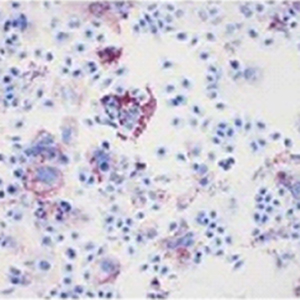Polydatin reverses oxidation low lipoprotein (oxLDL)-induced apoptosis of human umbilical vein endothelial cells via regulating the miR-26a-5p/BID axis

Submitted: 27 July 2022
Accepted: 9 August 2022
Published: 20 September 2022
Accepted: 9 August 2022
Abstract Views: 774
PDF: 405
HTML: 32
HTML: 32
Publisher's note
All claims expressed in this article are solely those of the authors and do not necessarily represent those of their affiliated organizations, or those of the publisher, the editors and the reviewers. Any product that may be evaluated in this article or claim that may be made by its manufacturer is not guaranteed or endorsed by the publisher.
All claims expressed in this article are solely those of the authors and do not necessarily represent those of their affiliated organizations, or those of the publisher, the editors and the reviewers. Any product that may be evaluated in this article or claim that may be made by its manufacturer is not guaranteed or endorsed by the publisher.
Similar Articles
- Yuejuan Cao, Li Cui, Shaoyong Tuo, Hongze Liu, Shaonan Cui, Resveratrol mediates mitochondrial function through the sirtuin 3 pathway to improve abnormal metabolic remodeling in atrial fibrillation , European Journal of Histochemistry: Vol. 68 No. 2 (2024)
- S. Iachettini, R. Valaperta, A. Marchesi, A. Perfetti, G. Cuomo, B. Fossati, L. Vaienti, E. Costa, G. Meola, R. Cardani, Tibialis anterior muscle needle biopsy and sensitive biomolecular methods: a useful tool in myotonic dystrophy type 1 , European Journal of Histochemistry: Vol. 59 No. 4 (2015)
- X.C. Xu, X. Abuduhadeer, W.B. Zhang, T. Li, H. Gao, Y.H. Wang, Knockdown of RAGE inhibits growth and invasion of gastric cancer cells , European Journal of Histochemistry: Vol. 57 No. 4 (2013)
- Andrea Amaroli, Sara Ferrando, Marina Pozzolini, Lorenzo Gallus, Steven Parker, Stefano Benedicenti, The earthworm Dendrobaena veneta (Annelida): A new experimental-organism for photobiomodulation and wound healing , European Journal of Histochemistry: Vol. 62 No. 1 (2018)
- JM SeguÃ-Simarro, I Bárány, R Suárez, B Fadón, PS Testillano, MC Risueño, Nuclear bodies domain changes with microspore reprogramming to embryogenesis , European Journal of Histochemistry: Vol. 50 No. 1 (2006)
- Peipei Lu, Shuxiang Li, Caoyang Zhang, Xinyi Jiang, Jinghua Xiang, Hong Xu, Jian Dong, Kun Wang, Yuhua Shi, Spinosin ameliorates osteoarthritis through enhancing the Nrf2/HO-1 signaling pathway , European Journal of Histochemistry: Vol. 68 No. 2 (2024)
- L Postiglione, G Di Domenico, G Giordano-Lanza, P Ladogana, M Turano, C Castaldo, Effect of human granulocyte macrophage-colony stimulating factor on differentiation and apoptosis of the human osteosarcoma cell line SaOS-2 , European Journal of Histochemistry: Vol. 47 No. 4 (2003)
- Cristian Turato, Mariapia Vairetti, Marta Cagna, Alessandra Biasiolo, Andrea Ferrigno, Santina Quarta, Mariagrazia Ruvoletto, Silvia De Siervi, Patrizia Pontisso, Laura Giuseppina Di Pasqua, SerpinB3 administration protects liver against ischemia-reperfusion injury , European Journal of Histochemistry: Vol. 66 No. 4 (2022)
- M. Relucenti, R. Heyn, L. Petruzziello, G. Pugliese, M. Taurino, G. Familiari, Detecting microcalcifications in atherosclerotic plaques by a simple trichromic staining method for epoxy embedded carotid endarterectomies , European Journal of Histochemistry: Vol. 54 No. 3 (2010)
- H. Zhang, P. Liu, S. Wang, C. Liu, P. Jani, Y. Lu, C. Qin, Transgenic expression of dentin phosphoprotein inhibits skeletal development , European Journal of Histochemistry: Vol. 60 No. 1 (2016)
<< < 12 13 14 15 16 17 18 19 20 21 > >>
You may also start an advanced similarity search for this article.

 https://doi.org/10.4081/ejh.2022.3505
https://doi.org/10.4081/ejh.2022.3505











